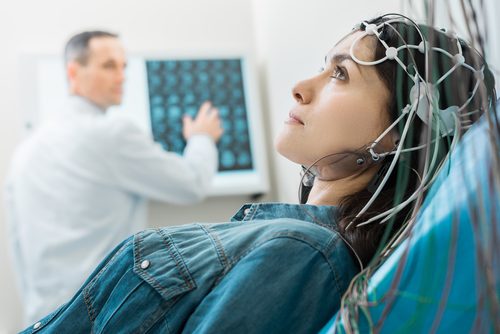Brain Stimulation Plus Rehab May Benefit Unilateral Cerebral Palsy Patients, Study Says

Children with unilateral cerebral palsy due to brain damage early in life or lesions caused by insufficient blood flow (ischemia) to the brain might benefit from brain stimulation combined with movement therapy, researchers report.
The study, “Transcranial direct current stimulation and constraint-induced therapy in cerebral palsy: A randomized, blinded, sham-controlled clinical trial,” appeared in the European Journal of Pediatric Neurology.
Children with cerebral palsy affecting only one side of the brain (unilateral cerebral palsy or UCP) often require rehabilitation to help them be able to perform daily life tasks independently. Despite rehabilitation’s benefits, however, they face lifelong physical impairment.
Previous studies in adult stroke patients have shown that non-invasive brain stimulation combined with rehabilitation has a greater impact on motor skills than rehabilitation alone.
A team led by researchers at University of Minnesota decided to investigate the safety and efficacy of direct brain stimulation, using a mild electrical current to either boost or inhibit the brain’s own electrical impulses, combined with constraint-induced movement therapy (CIMT) in children and young adults with UCP.
CIMT is a new rehabilitation approach to improve motor ability and functional use of an arm and hand by forcing the use of the affected side and restraining the unaffected side with gloves, slings, or other devices.
A total of 20 UPC patients, ages 7 to 21, were enrolled in the study (NCT02250092) conducted at the Gillette Children’s Specialty Healthcare and the University of Minnesota.
Around or before birth, all had experienced a stroke on one side of the brain, or bleeding inside the fluid-filled cavities inside the brain.
The participants were randomized to receive CIMT and either transcranial direct current stimulation (tDCS) or sham stimulation.
tDCS is a non-invasive technique that delivers low-amplitude electrical stimulus to the brain. In this study, the electrodes were directed to trigger the primary motor cortex (a brain area that controls movement) on the uninjured side. The current inhibited the impulses in this part of the motor cortex, with the aim of making the motor cortex on the brain’s injured side more active, exerting greater control over the affected limbs.
The intervention consisted of daily sessions of 20 minutes of tDCS or sham to the non-affected side of the brain concurrently with CIMT, followed by 100 minutes of CIMT alone. This regimen was repeated for 10 consecutive workdays, and the primary goal was improvements in the affected hand.
Both groups showed significant improvements in hand function by the end of the intervention, and again after six months. But no significant differences were reported between the tDCS and sham stimulus groups.
Re-evaluation of the results in participants who had strong electrical communication between each side of their brain and their hand function revealed they most benefited from tDCS. These patients showed greater improvements in hand function compared to those whose brain connections were altered. However, the number of participants was limited and further studies to confirm this finding are warranted, the researchers wrote.
The treatment was found to be safe and well-tolerated, with no serious adverse events reported. Non-serious side effects were nausea, tactile symptoms at the site of stimulation, headache, dizziness, and sleepiness.
The researchers believe that this “study demonstrates the safety and feasibility of such group interventions using tDCS” and “presents preliminary evidence” of its efficacy for children and young adults with UCP.
In part, the limited efficacy shown could be due to the strength of the electrical stimulus used in this study, the team noted. As such, the researchers propose that future studies “focus on the optimal dosing” of tDCS.


